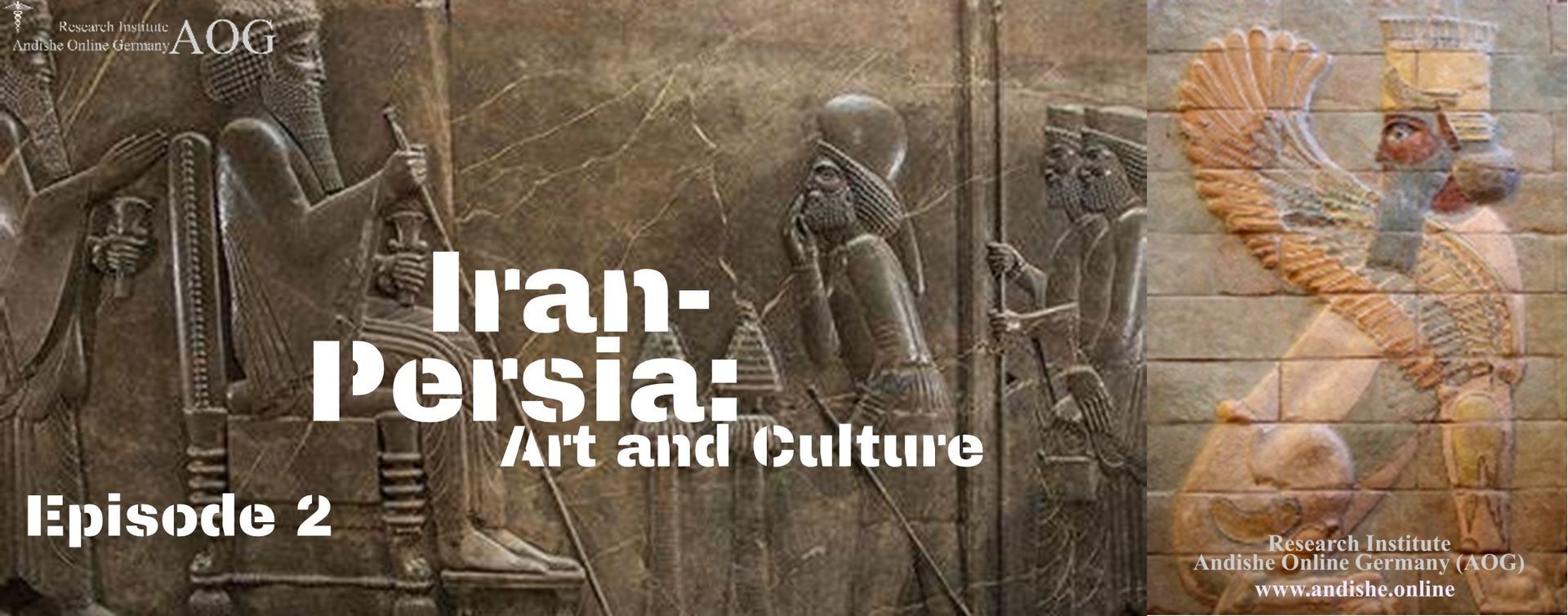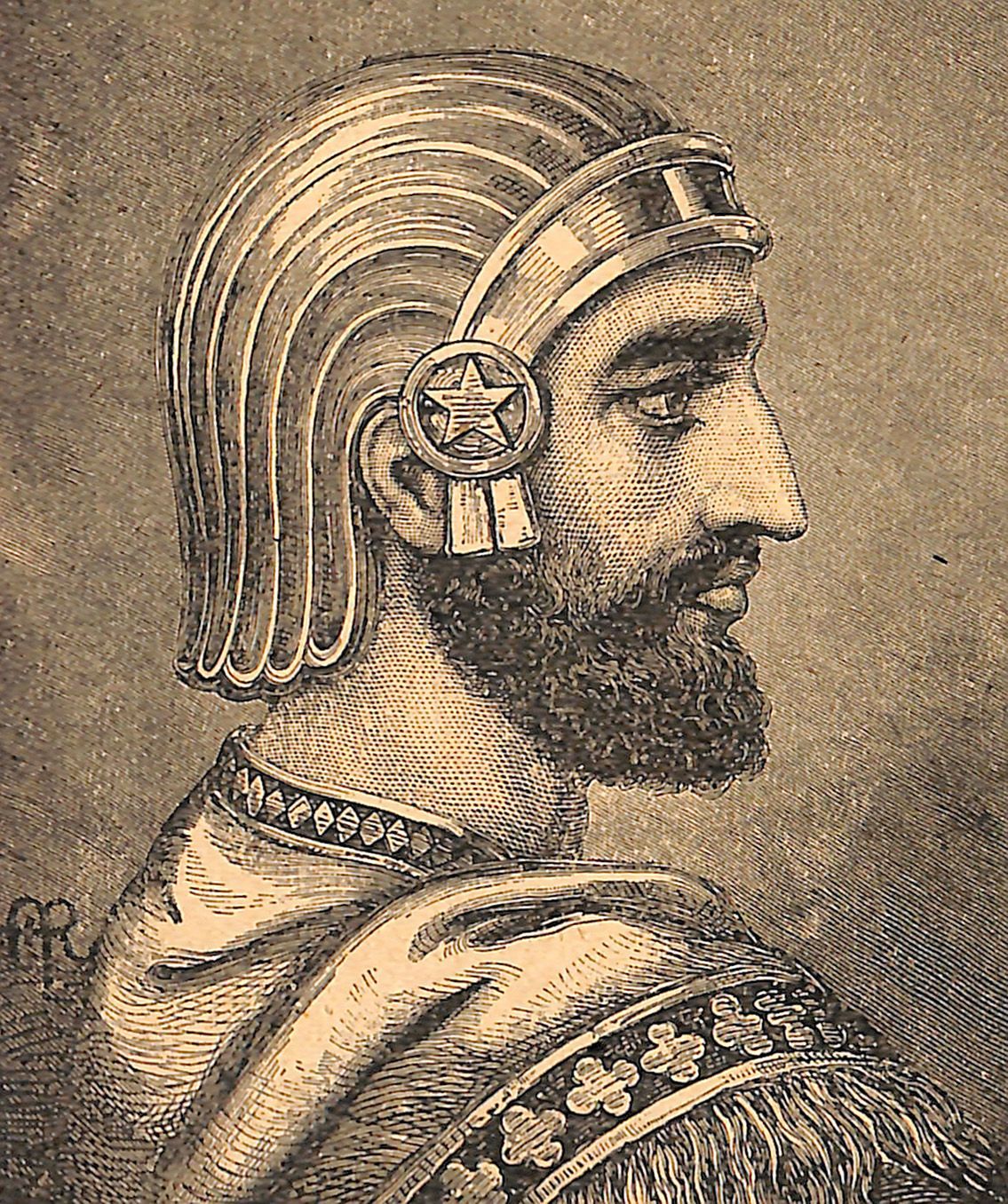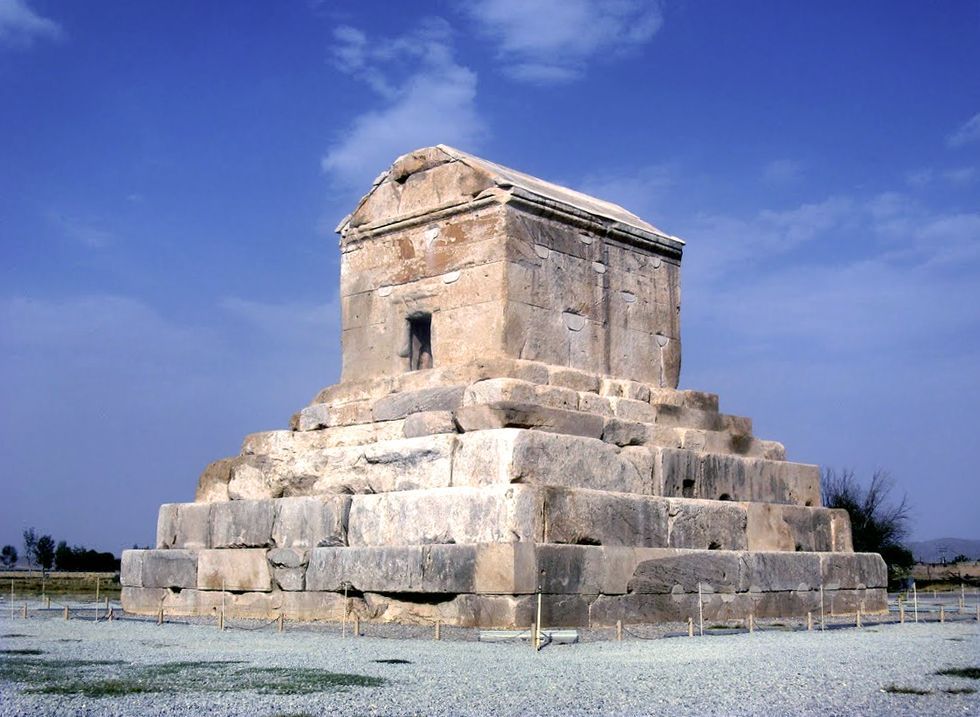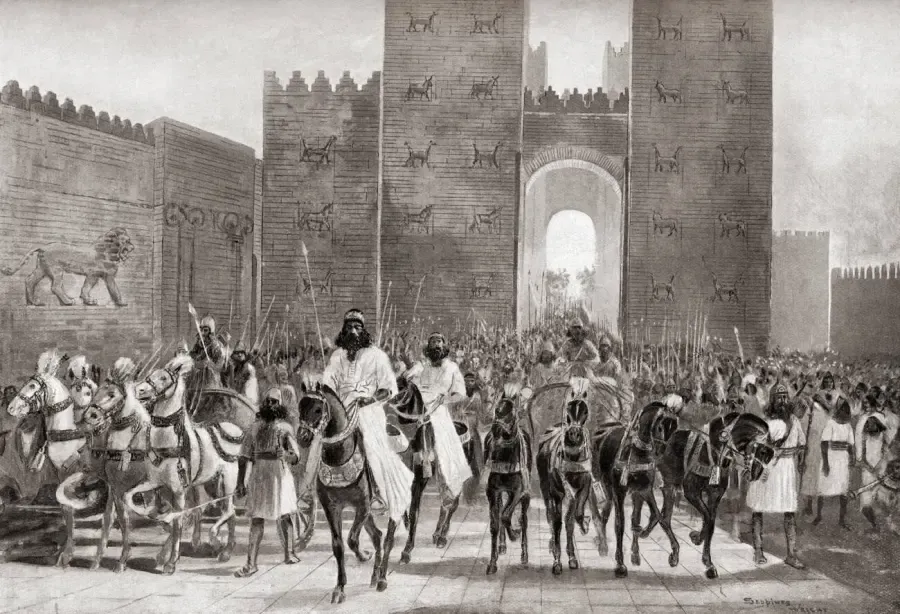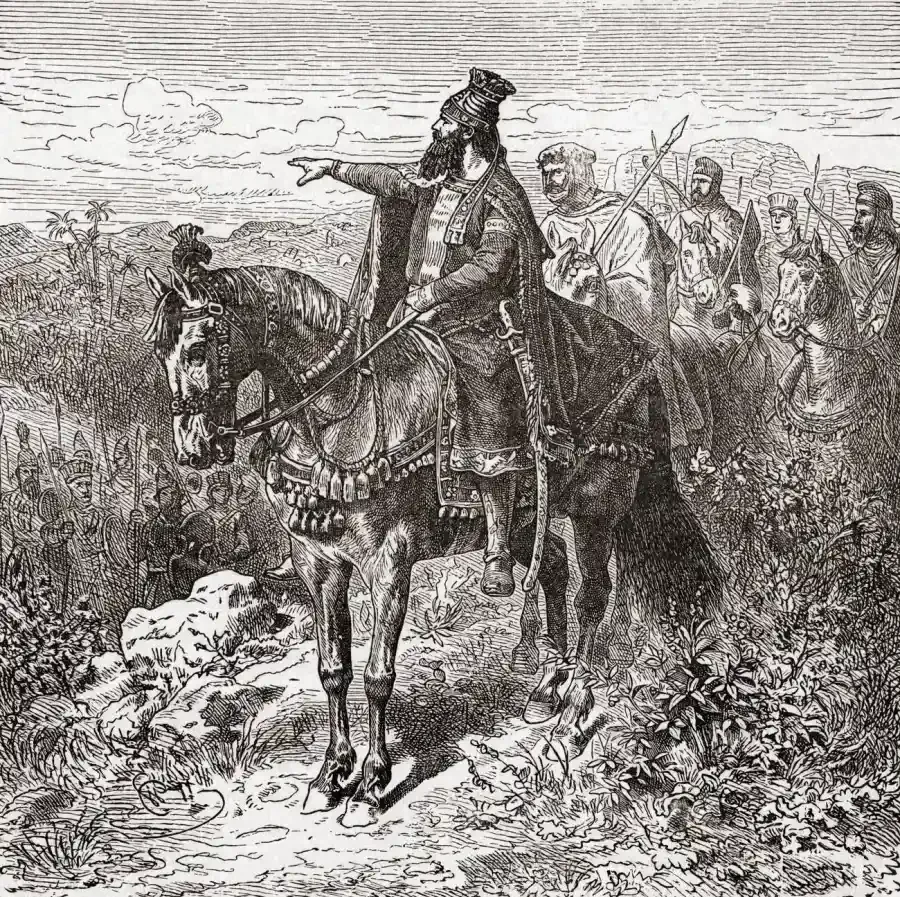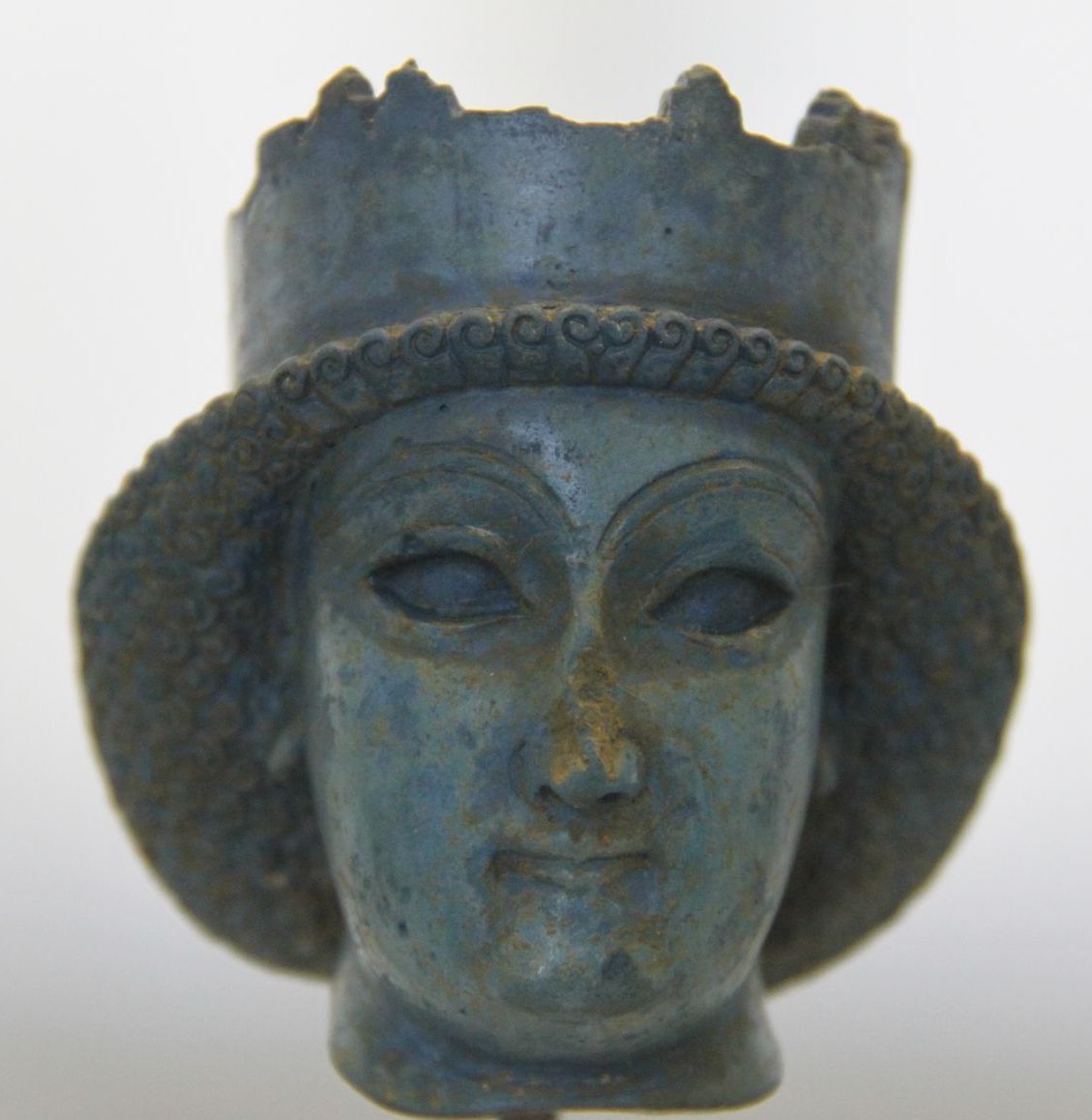Podcast &Video clip at the bottom of the page
The audio format of this article, designed for visually impaired individuals, can be found at the bottom of the page.

OSF:
English:
https://doi.org/10.17605/OSF.IO/EGMPC
Persian:
https://doi.org/10.17605/OSF.IO/W3M58
French:
https://doi.org/10.17605/OSF.IO/ETXPS
Spanish:
https://doi.org/10.17605/OSF.IO/DKSEQ
German:
https://doi.org/10.17605/OSF.IO/ZW47U
Arabic:
Article Metadata
Author: Faramarz Tabesh
ISNI: 0000 0005 2737 2290
Affiliation: Founder and Director, Research Institute Andishe Online Germany (AOG)
ISNI: 0000 0005 2724 714X | Ringgold ID: 823032
Journal: Andishe | ISSN: 1619-9898
ORCID: 0009-0009-2636-2126
Article Type: A Historical Overview of Ancient Iran
Keywords:
Psychology, Cognitive Discussion, Scientific Analysis, Conceptual Misconceptions, Epistemology, Interdisciplinary Critique, Philosophy of Mind
Publication Dates:
- English, Persian, and German Editions: On June 01, 2024
Archive Code: nd #vadk halkdn ndkhsjx-h vdg ihd ghdj h, ,vgn idsj,vd
Research and Translation: Faramarz Tabesh
The articles presented here are the result of
personal, independent research conducted
by Faramarz Tabesh.
Saturday, June 01, 2024
Episode 2:
The Persian Achaemenid Dynasty -
a real highlight of world history
Deviation in contemporary historiography
According to the historians Ibn Khaldun [1] and Abu Rihan al-Biruni [2], there is incontrovertible evidence that all the libraries with their valuable books were destroyed by fire during the Arab invasion of Iran in the 7th century.
In addition to this event, numerous information tablets from this frontier were destroyed as early as 330 BC during the great fire and destruction caused by Alexander [3] in Persepolis.
According to the French archaeologist André Godard (1881-1965), the burning of Persepolis was carried out by Macedonian soldiers on the direct orders of Alexander. This momentous historical event led to Alexander being referred to by the ancient Persians as "Accursed Alexander" (Farsi: اسکندر گجستک). [See also AOG-Q- 1]
A detailed study of the existing historical documentation leads to the conclusion that the work of writing history and recording events has been carried out mainly by Western academic centers for at least a century until today. This had two consequences:
1. less attention has been paid to the fundamental achievements of ancient Iranians in recording the historical truth of some events.
2 This immense vacuum led the Europeans to appropriate some crucial events of world history, most of which had already been popular in ancient Iran.
In the context of this discussion, it was not Cleisthenes of Athens [4] but Cyrus the Great of the Persian Achaemenid Empire who took the first essential and practical steps towards establishing democracy, which is of central importance. However, Cleisthenes also did a lot in this direction in Athens.
The manipulation of ancient Iran's history to diminish or, in some cases, even erase its achievements is not a phenomenon limited to Europe. Such cases can also be observed in ancient Egypt and subsequent times. Two specific cases are cited below to illustrate this.
In the propaganda based on disinformation in ancient Egypt, the thesis was put forward that Cambyses II was the son of Cyrus and Nitetis, the daughter of the pharaoh Apries. Consequently, Cambyses II can be described as Egyptian on his mother's side. The attack on Egypt was in revenge on his grandfather, the pharaoh, and Cambyses II reclaimed the kingship over Egypt, which was his family's legal right. However, Reliable sources, including the history of Herodotus, indicate that Cambyses II was the son of Cyrus the Great and the Persian princess Cassandra.
The story of Cyrus's marriage to the daughter of the Egyptian pharaoh was apparently invented later by the Egyptian priests to reduce the question of the Persians' conquest of Egypt to an internal Egyptian interaction. In this context, Cambyses II was attributed to an Egyptian pharaoh as the grandson of this pharaoh.
Another example of the construction of a historical event is the claim by some Greek historians that Cambyses II destroyed the tomb of Amasis after the conquest of Egypt and burned his mummified body. However, this thesis contradicts previous findings, according to which there are no reports or evidence from Egyptian sources about Cambyses's attack and destruction of Egyptian temples.
[A-Q- 5 & 6] also [I-Q- 3]
Virtual reconstruction of Persepolis, part 1
1- Cyrus the Great
I, Cyrus, king of the world ...
In some German sources, Cyrus's birth date [I-Q 1] is 580 to 590 BC. In some English sources, however, the date is 600 years before Christ. In both cases, it can be historically deduced that they lived in the same period.
The outstanding practical deeds of Cyrus, reflecting the spirit of true democracy [5], have been recorded by Western historians and mentioned several times in the Old Testament of the people of Moses.
In addition, the Cyrus Cylinder [6], considered the most crucial source of human rights, still exists and is preserved in the British Museum.
When Cleisthenes and Cyrus are compared in terms of the steps they took to establish human rights, Cyrus is undoubtedly the more influential.
In this context, I would like to point out that Western historians should rethink their research methods and look for the original roots of democracy in ancient Iran and not only in Greece.
Some Outstanding Actions of Cyrus the Great
-Cyrus the Great is considered the founder of the Achaemenid dynasty.
-He founded the first Persian capital, Pasargad [7].
- He significantly increased the territory and influence of the Persians (Iranians).
-He is known as a fair and just ruler, a great politician, and a military strategist.
-He abolished slavery and accepted the conquered peoples' customs, traditions, and religions.
-He granted autonomy to all peoples as long as they paid their taxes and swore allegiance to Cyrus. This policy continued long after his death and was adopted by Alexander and the later Seleucid Empire.
-One of the most famous acts of Cyrus the Great was the liberation of the Jews from Babylon, who had been threatened since the destruction of Jerusalem by the Chaldean king of Babylon, Nebuchadnezzar II.
- Unlike other rulers in history, he did not allow the city's people to be harmed after conquering Babylon. Instead, his soldiers brought peace to the town at his command.
And...
Cyrus Cylinder
My huge armies marched peacefully throughout Babylon...
In 1879, a clay tablet was found in the city of Babylon [8] in a large and magnificent shrine known as the Esagileh Shrine [9] [also AOG-Q-2], which was actually built for Marduk, one of the ancient and great gods of Babylon. Translation of the text of this tablet led to evidence that the document was written in 538 BC on behalf of Cyrus the Great, the first Achaemenid king.
This historic document was first called the "First Declaration of Human Rights" by the British Museum, where it is kept, and then by Ban Kimon, the eighth Secretary-General of the United Nations. He considered it a source of pride for Iranians.
Another important aspect of this historic document is that the UN published this charter in six official languages in 1971.
A replica of the original Cyrus Cylinder has been set up at the UN headquarters in New York City for visitors to view.
2- Darius (Dariush) the Great
O Ahura Mazda, save my territory from enemies, drought, and lies.
"In paragraph 3 of the Persepolis Inscription"
Besides the founder of the empire, Cyrus the Great, Darius I is described as the most crucial great king of the ancient Persian Empire. He ruled the gigantic empire with full power and wisdom from 522 BC to 486 BC. He was the husband of Atussa [10], the daughter of Cyrus the Great. She is mentioned in historical texts as a powerful sage woman. Darius (Dariush) was, therefore, the son-in-law of Cyrus the Great.
In ancient Persian, Darius (Dariush) means "upholder of the good".
During the reign of Darius the Great over the Achaemenid Empire, Iran reached its greatest extent, covering large parts of the three continents of Asia, Europe, and Africa.
Darius (Dariush) was one of the three great kings of the Persian Achaemenid Empire. The Tanakh [11] [also B-Q-B] describes the decree and precise instructions for rebuilding the Jerusalem Temple.
Some historians cite the rebellion in Egypt as the probable cause of Darius' death, which prevented him from continuing to rule his empire.
Some of the achievements of Darius the Great
- Darius (Darius the Great) in the Old Testament of the Bible
Darius also helped the Jews to rebuild the Jewish temples destroyed by Bokht al-Nasr [12]. The name Darius (Dariush) the Great is mentioned in 25 verses in the Old Testament. The Bible discusses the stability and steadfastness of the Medes and Persians' laws in the Book of Daniel and Esther. This shows the importance of the law in maintaining the unity of the empire of Darius and his successors.
- Reconstruction of the Temples
Darius talks about the reconstruction of the Temples destroyed by Goumat Magh [13] in the Bisotun inscription [14]. To appease the Egyptians, whose temples had previously been destroyed [15], he visited their temples, paid his respects to them, and built a new temple of Amun. The ruins of which still bear witness to Darius's wisdom and magnanimity.
He also brought back to Egypt the Egyptian high priest who had gone into exile in Susa [16] and showed him great respect. Because of these deeds, the Egyptians were pleased with Darius and regarded him as one of their great lawgivers.
- Connection between the Mediterranean Sea and the Red Sea. Suez Canal.
Three stone inscriptions of Darius were found in the Suez Canal, the most detailed and essential of which consists of 12 lines and contains the praise of Ahura Mazda [17], the introduction of Darius, and the order to excavate the Suez Canal. The other two inscriptions are more minor and contain the introduction of Darius.
- Darius (Dariush) and the Promotion of Astronomy
Darius (Dariush) was a great promoter of knowledge. At his court, he gathered many scientists from around Iran, including Babylon, to establish the Iranian calendar and calculate the New Year. Long after Darius' death, many of these scientists, including Babylonians, were still present at the court of his successors.
Some historians believe that one of these scientists, Kidinnu [18], made calculations so accurate that there is little difference between them and today's clocks, telescopes, and even computers.
- The Religious Policy of Darius the Great
Darius (Dariush) treated all religions equally and avoided religious fanaticism. Darius even ordered each nation to collect and write down its religious and moral laws and act according to its traditions and rules. In this way, every officially recognized religious community or nation produced a law.
- Division of the Empire into Several Communities
Dariush divided the land of Iran into several provinces and appointed a governor for each province. It is said that the number of provinces was between twenty and twenty-six, but the number of provinces in the inscription of Naqsh-e Rostam [19] reaches thirty provinces.
- Establishment of the Eternal Corps (Garde Javidan)
Darius (Dariush) had formed a particular army known as the Garde Javidan (Stable or Eternal Army) so that the armed forces could reach the centers of rebellion and enemy attacks quickly and accurately. The number of 10,000 soldiers in this army was constant and never reduced.
- Establishment of the Royal Road
Darius, among other things, had the Royal Road built from Sardis, the ancient capital of Lydia, to Susa (Shush), the capital of the Achaemenids, and another road between Babylon and Egypt.
- Adjustment of taxes
The Greek historian Plutarch [20] writes:
“Darius had the taxes examined to see if the people could pay them, and after learning the result, he lowered the taxes to relieve the people of this burden.”
- Unification of currency and units of measurement
One of the measures taken by Darius the Great was the creation of a national currency unit. The gold coins that were used throughout Iran at this time are still called Daric coins today.
- Compilation of Egyptian legislation
According to Diodorus [21], the father of Xerxes, Darius, was furious about the lawlessness in Egypt, which was part of his domain. He, therefore, gave the order to write new laws for Egypt that would enable a life of virtue and reverence for the gods. Papyrus number 215 in the National Library of Paris contains the document of this claim.
Prof. Heidemarie Koch discusses other achievements of Darius in her work “Darius the King Proclaims”.
An Important Extract from the Bisotun Inscription
In the Bisotun inscription, Darius the Great presents Achaemenes as the father of Teispes and declares that eight of his fathers were kings before him. In the same inscription, he continues:
"We are called Achaemenids because we have been noble for generations. Our families have always been kings. Eight of my ancestors have been kings. I am the ninth king. We have been kings from two branches."
Prof. Heidemarie Koch believes that the sentence "I am king in two ways" means that he is both Cyrus the Great's successor and Cyrus' cousin. Thus, Cyrus' ancestors are also considered to be his ancestors.
Professor Koch's statement is correct since in the charter of Cyrus the Great, he introduced himself as a descendant of Teispes (Teispes), king of Anshan, and Dariush Shah was also a paternal descendant of the same person.
Professor Koch's account of the Bisotun inscription mentions only four of these eight kings. These four persons are:
Achaemenes, Teispes (Cispis), Aryameneh, and Arsham.
Other sources categorize the eight persons mentioned as follows:
Achaemenes (King of Pars)
Teispes (Cispis) (Shah of Pars)
Cyrus I (son of Teispes and father of Cambyses I)
Aryameneh (Shah of Pars, son of Teispes, and father of Arsham)
Cambyses I (son of Cyrus I and father of Cyrus the Great)
Arsham (King of Pars, son of Aryameneh, father of Vishtasep, and grandfather of Darius the Great)
Cyrus the Great (Emperor of Iran, son of Cambyses I and father of Cambyses II)
Cambyses II (Emperor of Iran, son of Cyrus the Great)
End of Episode 2
(At the conclusion of this page, we direct your attention to a question that has been posed regarding this article and its response.)
You will read in Episode 3:
3- Xerxes I (Khashayarsha) the Great
Xerxes I (Khashayarsha) and Esther
The pontoon bridges of Xerxes
The remarkable humanity of Xerxes after the conquest of Athens
Genealogy of the Achaemenids
And ...
Sources:
Biblical Sources (B-Q)
A) Bible, e.g.
B) Ezra 6 :1 EU
C) Ezra 6:15 EU
D) Ezra 4:7 EU
AOG Sources (AOG-Q):
Farsi :
1- "Current Civilization's Four Epochs of Thought" . Farsi: (چهار دوره تفکراتی در تمدن حاضر) by Faramarz Tabesh.
https://www.andishe.online/%D8%A8%D9%87-%D9%85%D9%86%D8%A7%D8%B3%D8%A8%D8%AA-%DB%8C%DA%A9%D8%B5%D8%AF-%D9%88-%D8%A8%DB%8C%D8%B3%D8%AA-%D9%88-%D9%BE%D9%86%D8%AC%D9%85%DB%8C%D9%86-%D8%B3%D8%A7%D9%84%D8%B1%D9%88%D8%B2-%D8%AA%D9%88%D9%84%D8%AF-%D8%A7%D8%B3%D8%AA%D8%A7%D8%AF-%D8%A7%D9%84%D9%87%DB%8C
2- "Human Rights at the University of Perfection Process". Farsi: (حقوق بشر در دانشگاه سیرکمال) by Faramarz Tabesh.
https://www.andishe.online/newpage64aa9d4b
3- "Widespread and Systematic Distortion and Destruction of Iran's Ancient History - Examining the Depth of the Disaster". Farsi: (تحریف و تخریب گسترده و سیستماتیک تاریخ باستانی ایران- بررسی عمق فاجعه) by Faramarz Tabesh.
Iranian Sources (I-Q):
1- "World domination of Darius the Great". Original Persian title: (جهانداری داریوش بزرگ) by Alireza Shapour Shahbazi (1321-1385). He was an archaeologist, historian, writer, and expert on the archaeology of Achaemenid Iran. He was a professor at the universities of Shiraz, Tehran, Harvard, Columbia, Göttingen, and East Oregon and founded the Achaemenid Research Foundation in 1352.
2- "Ancient History of Iran". Original Persian title: (تاریخ باستانی ایران). Author: Hassan Pirnia (called Moshir al-Molk and later Moshir al-Doulah) (1250-1314). He was an Iranian politician, jurist, historian, and prime minister of Iran at the end of the Kajar dynasty. Pirnia is the founder of the School of Political Science and Iranian Criminal and Civil Procedural Law.
3- "History of the Iranian People". Original Persian title: (تاریخ مردم ایران). by Abdul Hossein Zarrinkoob (1301-1378). He was a writer, historian, literary critic, author, translator, and one of the most influential historians of modern Iran.
German sources (D-Q):
1- "Es kündet Dareios der König" by Prof. Heidemarie Koch discusses Darius's other achievements in her work.
2- "Darius and the Persians" by Walter Hinz (1906-1992), German Iranologist.
Other Sources (A-Q):
1- "Persia and the Bible" by Edwin M. Yamauchi. Japanese-American historian.
2- "The Scale of Empire: Territory, Population, Distribution" by Walter Scheidel.
3- Britannica. Purim.
4- "The Peloponnesian War" by Nigel Bagnall.
5- Encyclopædia Iranica. "CAMBYSES" by Dandamayev, Muhammad A.
6- The Cambridge History of Iran- The second volume
Footnotes:
[1] Walī ad-Dīn ʿAbd ar-Rahmān ibn Muhammad ibn Chaldūn al-Hadramī (1332 -1406) was a North African historian and politician.
[2] Abu r-Raihan Muhammad b. Ahmad al-Bīrūnī (973 - 1048) was a Persian (Iranian) mathematician, cartographer, astronomer, astrologer, philosopher, pharmacologist, mineralogist, explorer, historian, and translator.
[3] Alexander (356 BC - 323 BC) was king of Macedonia and hegemon of the Corinthian League from 336 BC until he died Alexander III.
[4] Cleisthenes of Athens (c. 570 BC - 507 BC) was a politician and statesman in Athens in the 6th century BC.
[5] The term "democracy" comes from Greek and can be translated as "rule of the people." The Persian king Cyrus the Great is considered the first world ruler to practice this form of government.
[6] According to the Johannes Gutenberg University in Mainz, Germany, the Cyrus Cylinder was embedded in the foundations of the city wall of Babylon in 539 BC, where it survived until its discovery in 1879. The Cyrus Cylinder contains an account in Babylonian script and language of the conquest of Babylon by Cyrus the Great.
[7] Pasargad, or Pasargadae, was the first Persian capital of the Achaemenids. It is located at an altitude of 1900 m in the Murghab Plain in the Zagros Mountains in the province of Fars, about 130 km northeast of Shiraz in southern Iran, and was founded by Cyrus the Great (r.559-530). It is a 2 x 3 km park in which several monumental buildings were located, including the mausoleums of Cyrus the Great and Cambyses and the fortress of Darius the Great.
[8] Babylon was one of the most important cities of antiquity, as it was the capital of Babylonia.
[9] Esagileh is a Temple built initially for Marduk, one of Babylon's ancient and great gods. Cyrus the Great's cylinder was found here.
[10] Atussa (550 BC - 475 BC) was the eldest daughter of Cyrus II and Cassandra and the wife of Darius I. Her name means " "bestowing very richly," "well trickling," or "well granting" ". She was considered the most educated and cultured woman at the court. According to Herodotus, "Atossa got whatever she wanted" because she was the palace administrator.
[11] The Tanakh is Judaism's sacred scripture. It consists of three main parts: Torah ("Commandments"), Nevi'im ("Prophets"), and Ketuvim ("Writings"), the order of which essentially corresponds to their age and theological rank.
[12] Bakht Nazar was the king of Babylon in the 6th century B.C. In 586 B.C., he attacked the Jews in Jerusalem. He destroyed the Temple of Solomon, leaving only one wall standing.
[13] After the death of Cambyses in 522 BC on his way back from Egypt. Goumat Magh (in the Biston inscription: ga. u.m. ā.ta) pretended to be Bardia, son of Cyrus the Great, and ascended the throne. However, he was later killed by Darius the Great.
[14] The Bisotun (Behistun) inscription is a relief with accompanying text carved into a rock face at a height of 100 meters in the province of Kermanshah in western Iran. The work tells the story of the victory of the Persian king Darius I the Great (r. 522-486 BC) over his rebellious satraps.
[15] Some sources attribute this destruction to Cambyses II. However, this theory cannot be supported by the available documents. For further information, please refer to the following literature: [A-Q- 5 & 6] see also [I-Q- 3]. Further evidence attributing this destruction to Cambyses II: Herodotus writes: "Cambyses had behaved moderately up to the conquest of Egypt... but in the campaign to the land of Ethiopia, he had set out in a state of madness, like a man without the benefit of common sense. On the way back to Memphis, his behavior was angry with the Egyptian gods, religions, temples, and priests.”. Source: “Histoire de l'Empire Perse”, Pierre Briant, French ancient historian.
[16] Susa or Shush (Farsi: شوش) was one of the most important cities of ancient Iran. Susa served as Elam's capital and the Achaemenid Empire's winter capital and remained a strategic center during the Parthian and Sasanian periods.
[17] Ahura Mazda (also known as Ahuramazda, Harzoo, Hormazd, Hourmazd, Hurmuz, Ohrmazd, or Lord) is the supreme being worshipped as a god in Zoroastrianism, the ancient medieval world, and the ancient Persian world.
[18] Kidinnu (c. 400 BC - 330 BC) was a Chaldean astronomer and mathematician. He was born in Babylon, then part of the Achaemenid Empire.
[19] Naqsh-e Rostam (Farsi: نقش رستم, representation of Rostam) is an archaeological site in the southern Iranian province of Fars, six kilometers north of Persepolis near Shiraz. There are four rock tombs of Achaemenid kings and several Sassanid rock reliefs.
[20] Plutarch was an ancient Greek writer (c. 45 - c. 125).
[21] Diodorus was an ancient Greek historian of the late Hellenistic period. He lived in the first half of the 1st century BC.
A question about "Iran-Persia: Art & Culture," episode 2, paragraph "Some of the achievements of Darius the Great."
Dear Mr. Tabesh,
I would like to express my gratitude for the opportunity to read this series of articles on ancient Iran on the Institute's English website. With regard to the second episode, in the section on the achievements of Darius the Great, I have a question regarding the second paragraph. In the aforementioned paragraph, you wrote:
[ - Reconstruction of the Temples
… To appease the Egyptians, whose temples had previously been destroyed [15], … ]
The article fails to provide any insight into the circumstances surrounding the destruction of the Egyptian gods' tombs in the past. Meanwhile, as you noted in footnote 15, Herodotus asserts that Cambyses II, son of Cyrus the Great, was responsible for this destruction. However, the article fails to address this historical issue. I appreciate the opportunity to discuss these matters.
Answer to the question
I appreciate your question.
This discrepancy is mainly due to the considerable divergence between contemporary historians' opinions, based on available documents, and Herodotus' account.
I have discussed this matter in detail from both perspectives in footnote 15. In this case, attributing the destruction to Cambyses is not a valid interpretation. Please see my explanation in the same footnote. In addition, it is crucial to recognize that Greece and Iran were adversaries in ancient times. This fact may have had a negative impact on Herodotus' ideas.
I wish you and your family all the best.
Faramarz Tabesh
Neuer Text
A short story:
Crossing the River
A short story:
A butterfly´s dream
A short story:
A falling Leaf
Quantum dimension of matter
Tokyo experiment
Ostad Elahi's Tanbourplaying
Unification of the sciences of both dimensions
Cyrus the Great
Maosoleum of Cyrus the Great
Cyrus Cylinder
Cyrus in Babylon
Cyrus in Babylon
Darius the Great
Prinzessin Atussa
Neuer Text
Life in space
The question is:
Reincarnation or ascending method?
The seven factors of creation
Intelligence network
Master Elahi's Prophecies
Laws of creation
Laws of creation
Faramarz Tabesh
Code of the article in the research institute:
nd #vadk halkdn ndkhsjx-h vdg ihd ghdj h, ,vgn idsj,vd

Audio format for the visually impaired
Soon

